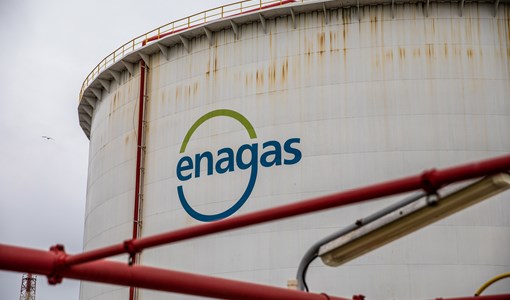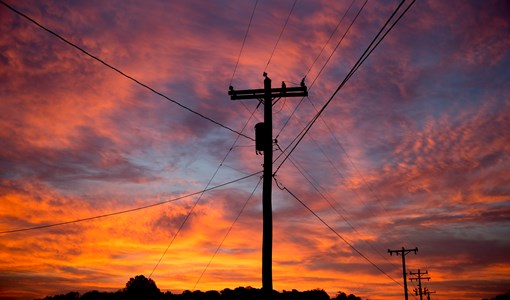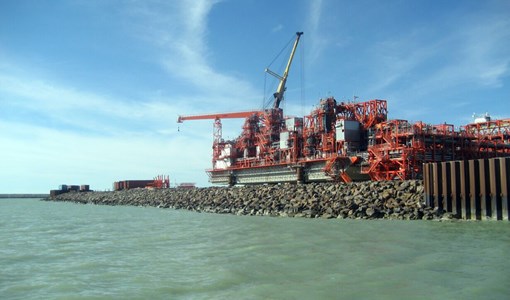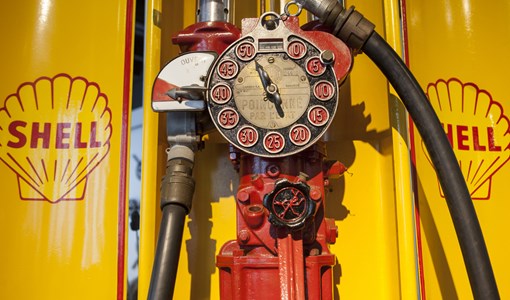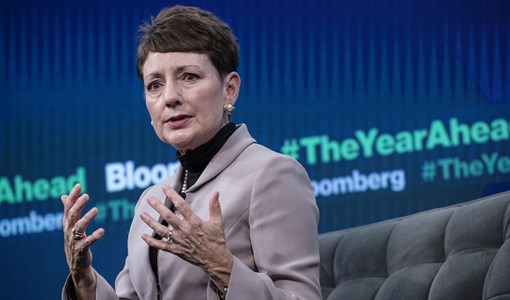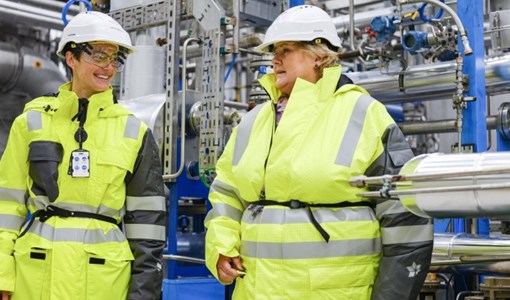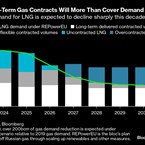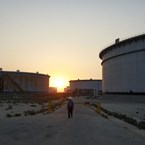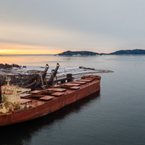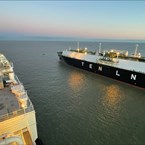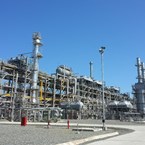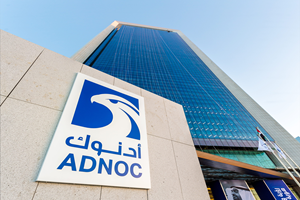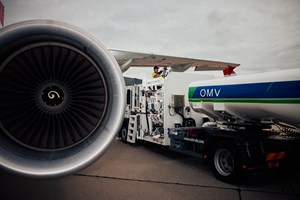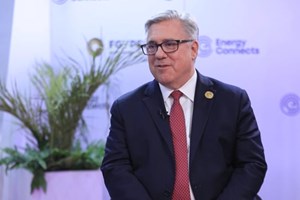Oil and gas industry doubles down on green investments, says DNV GL
New research published by DNV GL finds that the oil and gas industry expects to boost investment in the energy systems of the future this year, as companies seek to transform for the long term.
A record two-thirds (66 per cent) of senior oil and gas professionals report that their organization is actively adapting to a less carbon-intensive energy mix in 2021, up from just 44 per cent in 2018. Some 57 per cent plan to increase investment in renewables, up from 44 per cent last year, half (48 per cent) expect to increase investment in green or decarbonised gas.
Just a fifth (21 per cent) say they will increase investment in oil projects in 2021, as the sector increasingly comes to terms with the notion that the world’s demand for oil has peaked or will peak in the short to medium term. Expectations for an increase in natural gas investment remain steady at 37 per cent.
The majority of senior oil and gas professionals expect these shifts in investment will lead to a wider reshaping of the industry. Eight-in-ten (78 per cent) believe there will be increased consolidation in the year ahead, up from 64 per cent one year ago. Strategic reorientation may also involve asset and business sales, with 63 per cent expecting more demergers, divestments and spin-offs, up from 46 per cent last year.
Transformational investments come despite a crash in confidence for industry growth following the COVID-19 pandemic and subsequent oil and gas market crash. Only 39 per cent of senior oil and gas professionals are confident about industry growth in 2021, down from 66 per cent last year.
Turmoil and Transformation, DNV GL’s outlook for the oil and gas industry in 2021, suggests priorities are shifting as investors reassess the risks of financing oil and gas projects, and as governments and industry pour billions into green recovery strategies following the Covid-19 pandemic. The research is based on a survey of more than 1,000 senior oil and gas professionals and in-depth interviews with industry executives.
“Net-zero climate policies began to proliferate in 2020, from Europe to China, and made it onto the table in the US. Long term, net zero policies have the potential to drive deep decarbonization of the world’s energy system, and they are already changing the direction of the oil and gas industry,” said Remi Eriksen, Group President and CEO of DNV GL.
The oil and gas industry is moving through its third major downturn in 12 years, but the outlook for 2021 is influenced by the possibility that this downturn may be different from those of the past. Perhaps the most significant difference for the industry for 2021, is the shift in capital away from fossil fuels.
“The financial markets – through the effects of the Covid-19 pandemic – have seen what peak oil demand could look like, and are increasingly factoring in changing sentiment in society towards a decarbonized future. Decarbonization has moved from something on the horizon to an immediate priority, and there are signs that our sector may invest to transform rather than cut its way out of the present crisis,” said Eriksen.
Cost cutting will still be a universal priority (96 per cent) for 2021, but the industry is already lean. A resilient 63 per cent say their organization will still achieve acceptable profits if the oil price averages between US$40 to 50 per barrel in 2021. However, there are signs that traditional cost cutting methods are hitting their limits.
“The trouble with the industry’s available cost efficiency levers is that most of them have been pulled quite hard already. Cost efficiency has been an uninterrupted priority in each of the past seven years. For some, it is getting harder to squeeze any more water from the sponge,” said Hans Kristian Danielsen, Vice President, DNV GL. “Four fifths of senior oil and gas professionals say cost cutting will be more challenging than ever in 2021.”
Significantly, the oil and gas industry is not hitting the spending brakes as hard as it did after the downturn in 2014. While the proportion of respondents expecting to maintain or increase capex in the year ahead has fallen to 62 per cent – down from 72 per cent going into 2020 – this is much higher than the 43 per cent recorded following the last downturn.
The industry cut costs and waited for oil demand to rise during the last downturn, then renewed investment in oil and gas. While some in the industry are expecting a quick recovery, our research shows that most are looking longer term to transformational investments – to projects that will decarbonize the industry.
“Companies are betting long term when making transformational investments, aiming to navigate the multiple transitions taking place at different speeds around the world. While we see a crash in confidence for industry growth in 2021, we see growing confidence in the opportunities that lie in a decarbonized future,” said Danielsen.
New research published by DNV GL finds that the oil and gas industry expects to boost investment in the energy systems of the future this year, as companies seek to transform for the long term.
A record two-thirds (66 per cent) of senior oil and gas professionals report that their organization is actively adapting to a less carbon-intensive energy mix in 2021, up from just 44 per cent in 2018. Some 57 per cent plan to increase investment in renewables, up from 44 per cent last year, half (48 per cent) expect to increase investment in green or decarbonised gas.
Just a fifth (21 per cent) say they will increase investment in oil projects in 2021, as the sector increasingly comes to terms with the notion that the world’s demand for oil has peaked or will peak in the short to medium term. Expectations for an increase in natural gas investment remain steady at 37 per cent.
The majority of senior oil and gas professionals expect these shifts in investment will lead to a wider reshaping of the industry. Eight-in-ten (78 per cent) believe there will be increased consolidation in the year ahead, up from 64 per cent one year ago. Strategic reorientation may also involve asset and business sales, with 63 per cent expecting more demergers, divestments and spin-offs, up from 46 per cent last year.
Transformational investments come despite a crash in confidence for industry growth following the COVID-19 pandemic and subsequent oil and gas market crash. Only 39 per cent of senior oil and gas professionals are confident about industry growth in 2021, down from 66 per cent last year.
Turmoil and Transformation, DNV GL’s outlook for the oil and gas industry in 2021, suggests priorities are shifting as investors reassess the risks of financing oil and gas projects, and as governments and industry pour billions into green recovery strategies following the Covid-19 pandemic. The research is based on a survey of more than 1,000 senior oil and gas professionals and in-depth interviews with industry executives.
“Net-zero climate policies began to proliferate in 2020, from Europe to China, and made it onto the table in the US. Long term, net zero policies have the potential to drive deep decarbonisation of the world’s energy system, and they are already changing the direction of the oil and gas industry,” said Remi Eriksen, Group President and CEO of DNV GL.
The oil and gas industry is moving through its third major downturn in 12 years, but the outlook for 2021 is influenced by the possibility that this downturn may be different from those of the past. Perhaps the most significant difference for the industry for 2021, is the shift in capital away from fossil fuels.
“The financial markets – through the effects of the Covid-19 pandemic – have seen what peak oil demand could look like, and are increasingly factoring in changing sentiment in society towards a decarbonised future. Decarbonisation has moved from something on the horizon to an immediate priority, and there are signs that our sector may invest to transform rather than cut its way out of the present crisis,” said Eriksen.
Cost cutting will still be a universal priority (96 per cent) for 2021, but the industry is already lean. A resilient 63 per cent say their organisation will still achieve acceptable profits if the oil price averages between US$40 to 50 per barrel in 2021. However, there are signs that traditional cost cutting methods are hitting their limits.
“The trouble with the industry’s available cost efficiency levers is that most of them have been pulled quite hard already. Cost efficiency has been an uninterrupted priority in each of the past seven years. For some, it is getting harder to squeeze any more water from the sponge,” said Hans Kristian Danielsen, Vice President, DNV GL. “Four fifths of senior oil and gas professionals say cost cutting will be more challenging than ever in 2021.”
Significantly, the oil and gas industry is not hitting the spending brakes as hard as it did after the downturn in 2014. While the proportion of respondents expecting to maintain or increase capex in the year ahead has fallen to 62 per cent – down from 72 per cent going into 2020 – this is much higher than the 43 per cent recorded following the last downturn.
The industry cut costs and waited for oil demand to rise during the last downturn, then renewed investment in oil and gas. While some in the industry are expecting a quick recovery, our research shows that most are looking longer term to transformational investments – to projects that will decarbonize the industry.
“Companies are betting long term when making transformational investments, aiming to navigate the multiple transitions taking place at different speeds around the world. While we see a crash in confidence for industry growth in 2021, we see growing confidence in the opportunities that lie in a decarbonised future,” said Danielsen.
KEEPING THE ENERGY INDUSTRY CONNECTED
Subscribe to our newsletter and get the best of Energy Connects directly to your inbox each week.
By subscribing, you agree to the processing of your personal data by dmg events as described in the Privacy Policy.
More gas & LNG news
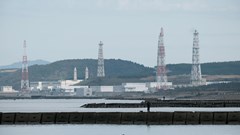
Tepco Flagship Nuclear Plant to Load First Fuel Since Fukushima
Apr 15, 2024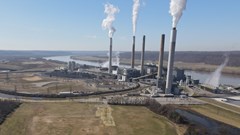
GE Vernova’s technology to help LG&E and KU further diversify sustainable energy portfolio
Apr 15, 2024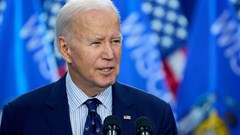
Biden Plans Sweeping Effort to Block Arctic Oil Drilling
Apr 12, 2024
LNG Importer New Fortress Energy Cuts London Trading Staff
Apr 11, 2024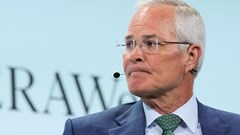
Exxon CEO Pay Climbed 2.8% to $36.9 Million Last Year on Pension
Apr 11, 2024
Equinor’s Energy Trader Eyes New Zealand Amid Expansion in Asia
Apr 11, 2024
Chevron CEO’s Pay Rose 12% to $26.5 Million Last Year on Pension
Apr 10, 2024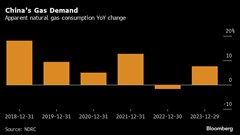
PetroChina to Build Up Its LNG Fleet and Expand Global Trade
Apr 10, 2024
GE Vernova secures H-class gas turbine order to convert coal-fired power plant in South Korea
Apr 10, 2024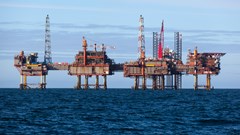
Chariot completes Energean partnership transaction, signs Morocco rig contract
Apr 10, 2024
Energy Workforce helps bridge the gender gap in the industry
Mar 08, 2024
EGYPES Climatech champion on a mission to combat climate change
Mar 04, 2024
Fertiglobe’s sustainability journey
Feb 29, 2024
Neway sees strong growth in Africa
Feb 27, 2024
P&O Maritime Logistics pushing for greater decarbonisation
Feb 27, 2024
India’s energy sector presents lucrative opportunities for global companies
Jan 31, 2024
Oil India charts the course to ambitious energy growth
Jan 25, 2024
Maritime sector is stepping up to the challenges of decarbonisation
Jan 08, 2024
COP28: turning transition challenges into clean energy opportunities
Dec 08, 2023
Why 2030 is a pivotal year in the race to net zero
Oct 26, 2023Partner content

Ebara Elliott Energy offers a range of products for a sustainable energy economy

Essar outlines how its CBM contribution is bolstering for India’s energy landscape

Positioning petrochemicals market in the emerging circular economy

Navigating markets and creating significant regional opportunities with Spectrum



